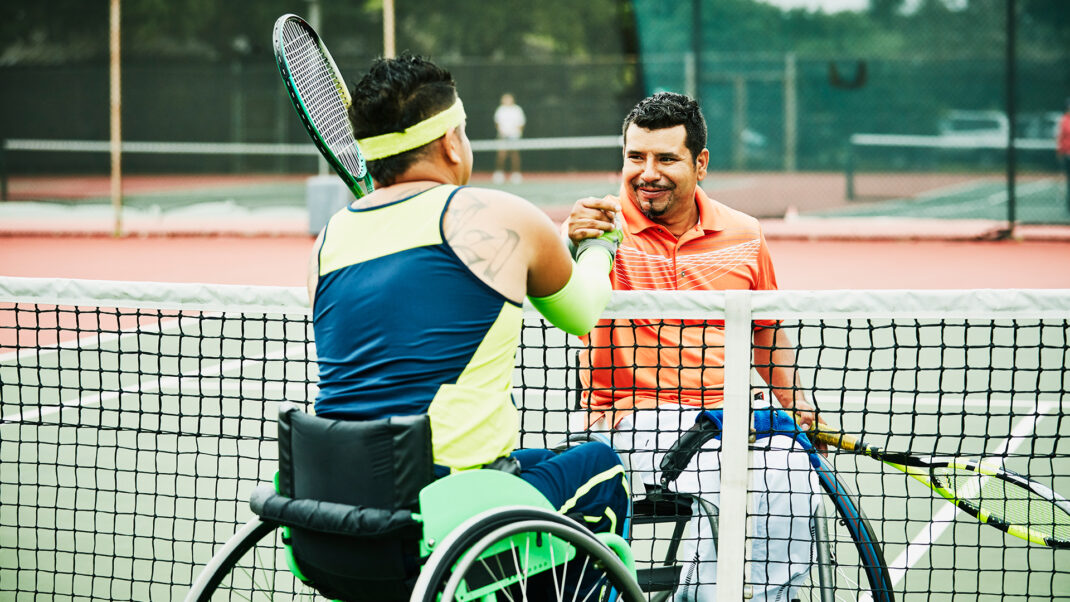Triathlon Training for Real Women
A sprint-distance triathlon may be just the event your average female clients need to motivate them to reach a new fitness level.
After 20 years of training for and competing in triathlons, I’ve grown accustomed to the reactions many people have when the subject comes up in
conversation. Common responses are “What are you, crazy?” and “No way could I do that!” or “How in the world can you find time?” What these people don’t know is that, unless you’re Ironman-bound, triathlons are not just for the superfit athlete, compulsive exerciser or wealthy retiree with too much time and too little to do.
Race directors understand that average people don’t have the time or desire to train for traditional long-course or Ironman distances. In fact, beginner-friendly sprint-distance races, many of which are designed exclusively for women, are showing up more often on race calendars. A sprint-distance race usually includes a 750-meter swim (roughly half a mile), a 20K bike ride (12.4 miles) and a 5K run (3.1 miles). Even a “supersprint” distance—half the distance of a sprint race—is offered at some women’s events.
One of these races may be just the goal some of your clients need to get excited and motivated about their training. Perhaps you’ll even want to join them!
For Women Only
What’s so unique about a triathlon for women only?
Many race directors host prerace clinics, partly to discuss logistics and tactics, but primarily to calm participants’ prerace jitters and create a group dynamic around the individual endeavor. Dee Fraser, a USA Triathlon (USAT)–certified coach for Reebok’s Team Vector from Huntington Beach, California, says women appreciate the opportunity to ask basic questions—“Is it all right to swim backstroke? What do I wear?”—without feeling embarrassed. Other features unique to women-only races are special touches like bib numbers imprinted with first names and the presence of “swim buddies” for those who need reassurance during the swim leg.
Also, the atmosphere at these events seems to be less tense than at traditional coed races. Participants hug and hold hands, smile and weep openly. Kids hold signs exclaiming “Go, Mom!” and husbands jockey for position with their camcorders at the finish line. Neily Mathias-Clode, Reebok athlete and swim/triathlon coach in San Diego, observes that coed triathlons may be intimidating for many women. “There is something more sisterly and supportive about training and racing with women,” she says.
Why Tri?
The necessary variety in triathlon training makes it one of the most enjoyable ways to get in all-around great shape. The three disciplines combine and complement one another to strengthen the cardiovascular system and to build balanced strength, which helps ward off injuries. But other reasons for “tri-ing” transcend fitness.
Last year I traveled with the Reebok Women’s Triathlon Series as the national coach for Team Vector and met women from all over the country. For most, it was their first triathlon experience. The stories they shared about what brought them there, and the postrace exhilaration and sense of accomplishment they felt, were truly amazing! Some even described the experience as “life changing.” An exaggeration? Consider that many of these women had never undertaken any fitness-related goal. Completing this sprint-distance race—even if it took 4 hours—was an awesome achievement they will never forget.
Judy Molnar, a USAT coach in Florida, can relate. Molnar spent many years struggling with her weight and failed diets. When she saw herself described on a doctor’s checkout sheet as morbidly obese, it finally hit home. “I realized I was killing myself slowly, and I knew I needed to make some changes,” she says. She started walking and gradually increased her fitness level. One day she saw a poster for a national triathlon that would happen right in her own backyard. “I just knew it was the event for me to do. I finished that race—smiling the entire time—because I was doing something I believed I could.”
After that experience, Molnar was hooked. She continued training and entered race after race. Each goal she reached motivated her to set the next one. Along the way, she was slowly transformed, losing more than 100 pounds. More important, exercise is now ingrained in her lifestyle; she says she can’t imagine ever going back to her “old” self.
Common Obstacles and Solutions
You may hear some or all of these excuses from clients you are encouraging to train for an event like this. Here are suggestions for handling the “I can’ts.”
“I’d like to, but I don’t have the time.” The training involved for a sprint-distance race doesn’t have to be much more than many of your clients already spend working out. Following a training plan that leads to a goal can actually improve time management skills, increasing productivity and efficiency.
“I can’t justify spending that much time on myself.” Women who care for others, be it small children or aging parents, may feel that time spent training is time spent selfishly. Mathias-Clode recommends choosing events that raise funds for charitable causes, thus putting more meaning into the mileage. “Training for a greater cause can also help get you out the door on days when self-motivation is low,” she says, and yet “it is much more gratifying than writing a check.”
“I don’t have enough self-discipline.” Motivation is greatest when a financial and/or social commitment has been made. Choose a race well in advance, send in the registration fee, and commit! Training small groups can increase both your clients’ motivation and your profits, and the social element will help keep everyone involved and excited.
Go for It!
As a personal fitness trainer, you already have what it takes to help your female clients achieve a goal like this. Introduce the idea, not only to your superfit clients, but also to those who need a boost in self-confidence or a motivational shot in the arm. The accomplishment of crossing the finish line can touch every area of a person’s life, providing great gains that cannot be found inside the gym.
With more than 30 triathlons under her belt—including Ironman Hawaii—Molnar says she still doesn’t feel she “looks” like a triathlete. However, she emphasizes that the training continues to give her much greater motivation than just a number on the scale. “It taught me I could do anything in my life if I just set a goal and prepared for it.”
Websites
www.usms.org (for a masters swim program in your area)
www.reebokwomenstriathlon.com
www.danskin.com
www.trisite.com
Book
Evans, M. 1997. The Endurance Athlete’s Edge. Champaign, IL: Human Kinetics.
Lenita Anthony, MA
Lenita Anthony, MA, is an exercise physiologist, Reebok master trainer and national coach for the Reebok WomenÔÇÖs Triathlon Series. She is also a contributing editor for IDEA publications.
Certification: ACSM





